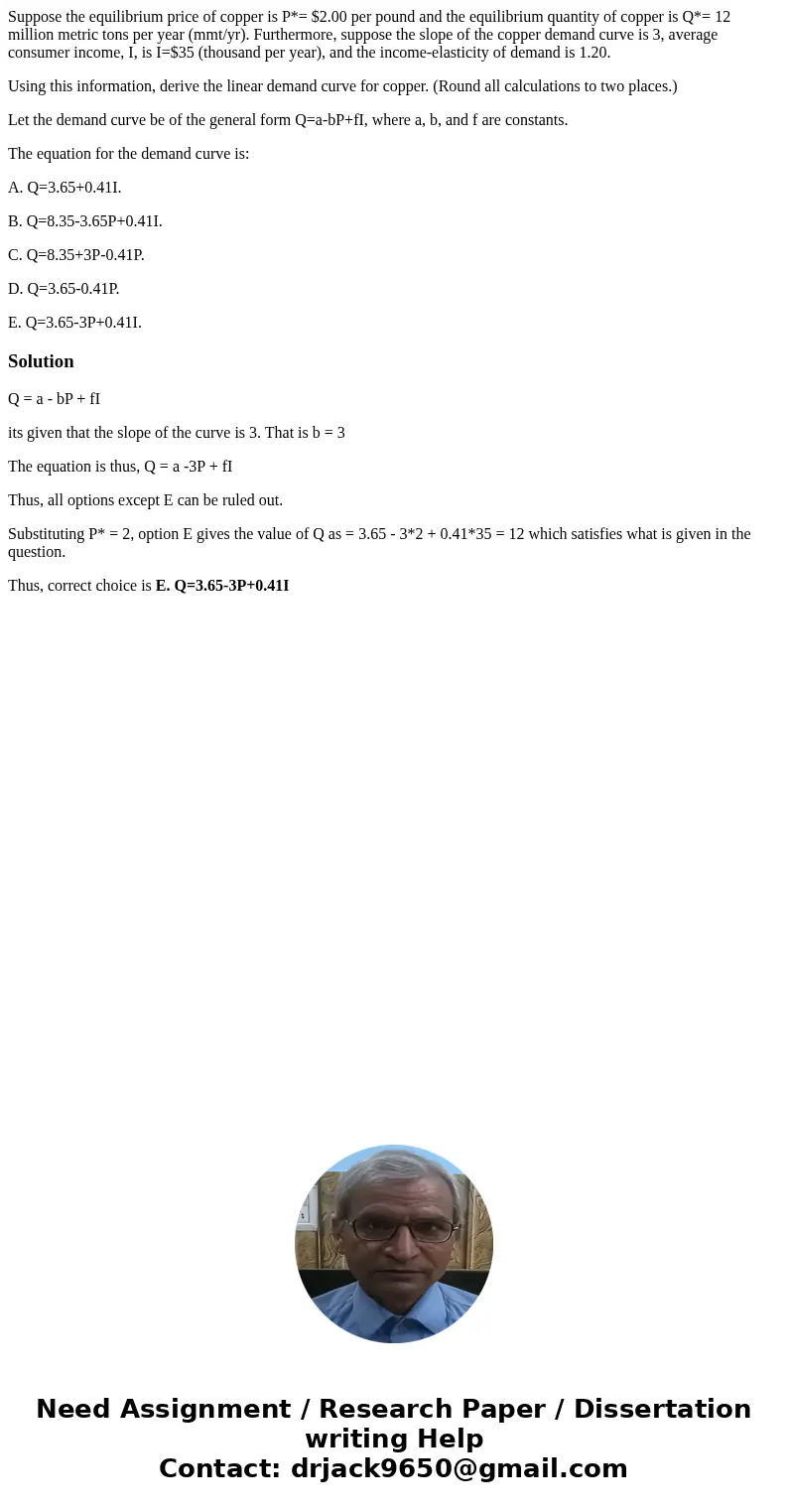Suppose the equilibrium price of copper is P 200 per pound a
Suppose the equilibrium price of copper is P*= $2.00 per pound and the equilibrium quantity of copper is Q*= 12 million metric tons per year (mmt/yr). Furthermore, suppose the slope of the copper demand curve is 3, average consumer income, I, is I=$35 (thousand per year), and the income-elasticity of demand is 1.20.
Using this information, derive the linear demand curve for copper. (Round all calculations to two places.)
Let the demand curve be of the general form Q=a-bP+fI, where a, b, and f are constants.
The equation for the demand curve is:
A. Q=3.65+0.41I.
B. Q=8.35-3.65P+0.41I.
C. Q=8.35+3P-0.41P.
D. Q=3.65-0.41P.
E. Q=3.65-3P+0.41I.
Solution
Q = a - bP + fI
its given that the slope of the curve is 3. That is b = 3
The equation is thus, Q = a -3P + fI
Thus, all options except E can be ruled out.
Substituting P* = 2, option E gives the value of Q as = 3.65 - 3*2 + 0.41*35 = 12 which satisfies what is given in the question.
Thus, correct choice is E. Q=3.65-3P+0.41I

 Homework Sourse
Homework Sourse